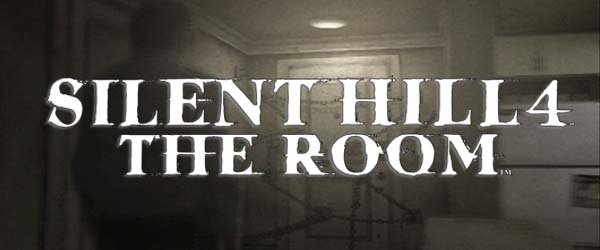
While I was playing through recent horror titles like The Evil Within, I noticed some interesting similarities with Silent Hill 4 that started to give me a new appreciation for some of this game's stronger aspects. In addition, while doing research for my Silent Hill timeline, I had to go back and play through Silent Hill 4: the Room again. I had only played through the game twice before, so I had to replay it in order to figure out how the timeline would work out. And while I was playing the game, I figured that I might as well go ahead and review it. At the time, it seemed like a novel idea to do a retro review of a Silent Hill game that wasn't Silent Hill 2, but lately, I've been seeing a lot of retro-reviews of The Room popping up other places. I haven't done any retro reviews yet; probably the closest thing has been my review of Demon's Souls. But in light of how unsuccessful the later Silent Hill games have been, the unfortunate cancellation of Silent Hills, and the uncertain future of the franchise (and of Konami as a studio), it's a good time to go back to look at what worked and what didn't about the previous games, and explore the question of whether we even want the franchise to continue.
The Room has the reputation of being the "bad" black sheep of the original Silent Hill tetralogy. I always thought that this reputation was unfortunate, and that the game wasn't quite as bad as people made it seem. I actually liked it better than Silent Hill 3 when I first played it, because I had never played the first Silent Hill. After I was able to track down a copy of the first game and play through it, Silent Hill 3 suddenly made a whole lot more sense, and I came to love it almost as much as I loved Silent Hill 2. So while I tend to agree that The Room is the "weakest" of the original Silent Hill games, I never really thought of it as being "bad"; just "less good". The release of future games by third party developers has only made The Room look better in retrospect.
An experimental formula
The game itself is a bit rough around the edges. It deviates significantly from the controls and mechanics established by the previous games in the franchise, and these changes are very hit-or-miss. This might be due, in part, to the possibility that The Room started out as an independent side project that was developed concurrently with Silent Hill 3, and that was eventually redesigned to work as a Silent Hill game in order to be more commercially viable. Whether or not that's true is still a hot issue of debate among the fanbase, but it's obvious to everybody that The Room plays a lot differently from previous titles.
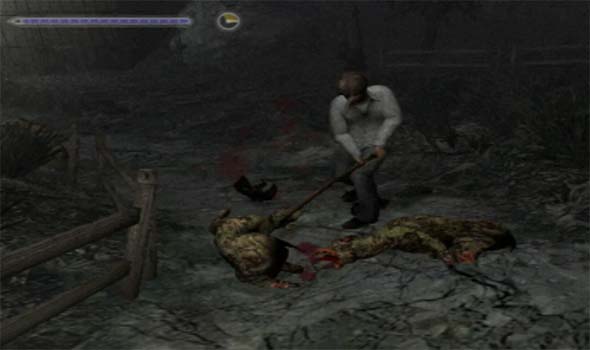
Movement and combat controls are radically changed from previous games in the series.
The most immediately obvious deviation is in movement and camera controls. The semi-first-person "tank" controls have been completely abandoned in favor of direct directional inputs, and the camera is significantly more limited than it has been in previous games. You can't snap the camera behind the character by holding the "look" button as you could do in previous games. Almost all camera angles are pre-set angles, and the player can usually only toggle between two possible camera angles in any given area.
This results in some very clumsy navigation of the environment, and it's very easy for the character to get turned around when camera angles flip. Most of the time, a camera change will go without a hitch, but there are a few frames in the game that consistently result in erratic and unpredictable movement. It happens most often when a camera change occurs concurrently with a change in direction of the character (to navigate around a corner or an obstacle). If the player's timing for changing the character's movement direction is not perfectly-timed, then the character ends up turning around, which can result in getting stuck in a loop between the two camera angles. This is the very reason that I prefer the tank controls. They may be a bit cumbersome, but at least they're consistent and always relative to a single frame of reference (the character's position in the world), rather than to an unpredictable camera.
The second major change is to combat. The game was designed to have a greater emphasis on melee combat, complete with new target-locking controls, a variety of breakable melee weapons, very limited ammunition for guns, and an on-screen meter for charging power attacks. The new movement controls do make it a bit easier to maneuver around enemies (especially multiple enemies), but only if you're in an open space and the camera angle doesn't go all wonky on you. The mechanics are serviceable, and I don't think they're as bad as some critics insist.
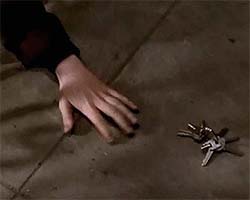
The designers were probably trying to mimic
the horror trope of fumbling for keys.
Inventory management is where things really start to get bad. Henry isn't a walking closet like the previous games' protagonists, and he has only a limited number of inventory slots. This is probably partly the result of the inventory being accessed in real-time by the directional buttons (which also might have played a role in the changes to the movement control scheme being entirely based up on the analog stick), in a desire to create a sense of frantically searching your pockets for a weapon or item while under pressure. It also adds more relevance to the Room 302 hub (another dramatic departure from previous games) by forcing you to go back to restock on supplies or swap out puzzle items.
But it's hindered by a lot of little mistakes... [More]
a5ccd49d-8af1-4839-8eb0-2796d3829980|6|4.5
Tags:Silent Hill, Silent Hill 4: the Room, Konami, Team Silent, KCET, Henry Townshend, Walter Sullivan, Eileen Galvin, room 302, horror, serial killer, murder, cult, occult, 21 Sacrements, sacrifice, ritual, ghost, escort quest, Alfred Hitchcock, retro review
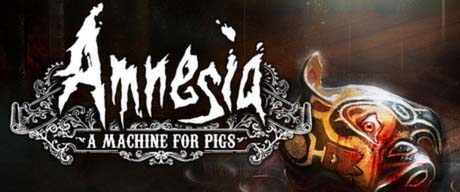
Is Frictional Games working on a new IP? I'm a bit curious as to why they outsourced development of the aptly-named A Machine for Pigs to the third-party developer The Chinese Room. Frictional's staff did stay on as "producers" for this game, so I'm sure that the final product is still consistent with what Frictional would have wanted if they had developed it themselves, and I think the overall story was still written by people at Frictional (but I could be wrong on that account). In any case, the change in development team has certainly had a dramatic effect on the way that the new game plays. The very core gameplay of exploring a linear dungeon with a flashlight is retained, but all the mechanics and the underlying feel of the game are completely different than its predecessor. This isn't necessarily a bad thing, as Amnesia: the Dark Descent wasn't perfect.
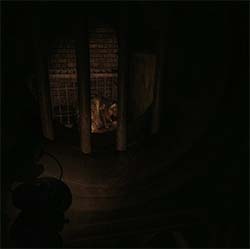
Once again, the underlying premise that sets up Amnesia: a Machine for Pigs is that your character wakes up in a mansion with no memory of who he is or why he is there. Your early exploration of the mansion reveals some vague threat, and you are forced to descend into a deep dungeon in order to discover who you are and resolve the threat. Along the way, you'll encounter deformed creatures and collect notes and documents from your former self explaining the situation, as well as have the occasional hallucinatory flashback as your memory slowly returns. But if you're worried that this sounds too much like the previous game, then fear not: A Machine for Pigs takes an entirely different approach to the gameplay and has a totally different feel to the entire experience. [More]
d070d945-e6da-4541-a97f-8240050b5cc7|1|4.0
Tags:Amnesia: a Machine for Pigs, Amnesia: the Dark Descent, review, the Chinese Room, Frictional Games, Steam, Victorian, England, industrial, survival, horror, survival horror, mansion, amnesia, Battle of the Somme, Silent Hill, Silent Hill Shattered Memories, Resident Evil, checkpoint, indie gaming
This review was originally published 06/21/2010 on Game Observer (now defunct as of 05/13/2014). It has been republished here for archival purposes.
I originally tried to review this game in the shoes of an objective game critic instead of a Silent Hill fan. As such, I was far too generous to it. In the time since the game's release, my opinions of it have changed dramatically, and I'm a big enough boy to admit when I'm wrong. Thus, I will include updated commentary in areas of this review where my opinion has changed, and I will not disregard my fandom for the sake of mass appeal. :/
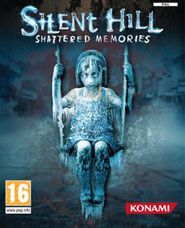
Climax perfectly poorly mixes the premise of the first Silent Hill with the psychological story-telling of Silent Hill 2 while laying the foundation for new "Horror" gameplay mechanics.
I’m a long-time fan of Silent Hill. I started with Silent Hill 2, which is my favorite game to date, and eventually made my way through the first game all the way up to the PSP’s Origins and last year’s craptacular Homecoming. I was very bothered to hear that Konami had disbanded the team that had worked on the first four games after the mixed critical and fan reception of The Room, and gave the development to a new team. Developers Double Helix and Foundation 9 completely dropped the ball with Homecoming, but Climax did a passable job with the story of Origins (even though the gameplay mechanics weren’t all that great) and Climax did a horrible job with Origins as well.
As you’re probably already aware, Shattered Memories is a re-imagining of the first Silent Hill game. It is NOT a port, nor is it a remake. Harry Mason gets in a car crash in the outer edge of the town of Silent Hill and wakes up to find his seven-year-old daughter, Cheryl, missing. He’ll proceed to explore the town of Silent Hill to find her, and along the way, meet several interesting annoying characters including a police officer named Cybil Bennett. But the similarities end there. [More]
ce74f430-6c69-40c8-8e6a-1f362ceb5c93|6|3.3
Tags:Silent Hill Shattered Memories, review, Silent Hill, Climax Studios, Konami, survival, horror, survival horror, PS3, PSP, Wii, Harry Mason, Cybil Bennett, fan fiction

Much ado has already been made about the re-recorded dialogue that is to be used in the Silent Hill HD Collection. Critics like myself have already been accused of being “haters” and "unwilling to accept change". Fortunately (or is it unfortunately?), Konami has given "haters" like me plenty of reason to hate the Silent Hill HD Collection.
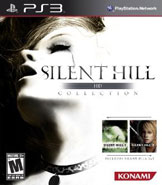
Table of Contents:
-(600x450).jpg)
I have extra copies of the original games. If you want to play them (and you know me personally), you can borrow them! [More]
9dc814aa-a1a1-4a9e-b864-3cb50f4bcaa1|8|4.9
Tags:Silent Hill, Silent Hill HD Collection, review, Silent Hill 2, Silent Hill 3, Konami, Hijinx, PS3, PS2, Team Silent, KCET, James Sunderland, Heather Mason, Douglas Cartland, Claudia Wolf, Laura, survival, horror, survival horror, XBox 360, Eddie Dombrowski
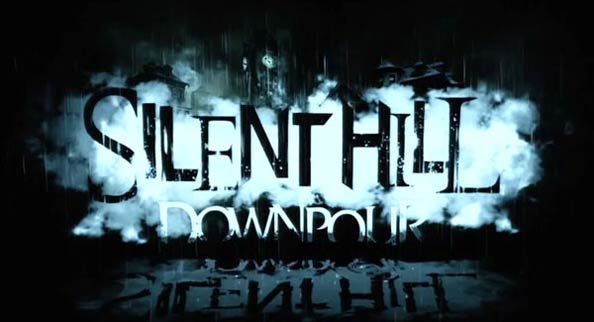
I didn’t have high hopes for Silent Hill Downpour. As such, I didn’t buy it new. I waited two weeks, bought it used off ebay, and finished it over a weekend. Sadly, pretty much all of my pre-release expectations turned out to be true.
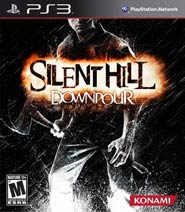
Upon booting up the game, I was immediately given mixed opinions about the game. There was a mandatory install, which fortunately only took a few minutes, but which is always an annoying thing to sit through (except for Metal Gear Solid 4, which managed to make it somewhat amusing). After the install though, I was treated to a stylish title screen with new composer Daniel Licht’s enjoyable title track.
Then the game starts, and the very first thing you do as the new main character, prison inmate Murphy Pendleton, is murder a defenseless fellow inmate during a combat tutorial that takes place in the prison showers. Murphy clearly has some beef with this fellow inmate (named Napier), and it seems like Napier probably deserved it, but murdering a defenseless person in cold blood is hardly what I’d expect from a Silent Hill game.
Table of Contents
[More]
a67ddc95-77b6-40e5-9a04-23f4912e6f2b|9|4.4
Tags:Silent Hill Downpour, Silent Hill, Silent Hill Homecoming, Konami, review, PS3, Achievement unlocked, Murphy Pendleton, survival, horror, survival horror, fan fiction, XBox 360, Vatra Games
|

| 12 | | | | | | | 60 | | 11 | | | | | | | 55 | | 10 | | | | | | | 50 | | 09 | | | | | | | 45 | | 08 | | | | | | | 40 | | 07 | | | | | | | 35 | | 06 | | | | | | | 30 | | 05 | | | | | | | 25 | | 04 | | | | | | | 20 | | 03 | | | | | | | 15 | | 02 | | | | | | | 10 | | 01 | | | | | | | 05 |
|